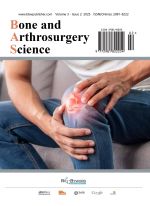Abstract
Objective: To analyze the epidemiological characteristics and influencing factors of flatfoot among primary and middle school students in Inner Mongolia. Methods: A survey was conducted among 2,800 primary and middle school students in Inner Mongolia. The foot arch and plantar pressure of the subjects were measured using the footprint method and the FootcanUSB plantar pressure testing system, respectively. The incidence of flatfoot among primary and middle school students was statistically analyzed, and regression analysis was used to analyze the influencing factors of flatfoot occurrence. Results: Among the 2,800 students, 867 cases of flatfoot were detected, with a detection rate of 30.95%. The proportions of mild, moderate, and severe flatfoot were 21.12%, 46.23%, and 31.62%, respectively. The detection rates of flatfoot among males and females were 20.04% and 10.93%, respectively, with the male detection rate significantly higher than that of females (P < 0.05). The detection rates of flatfoot among students aged 7 to 14 years old were 49.42%, 42.18%, 40.34%, 35.78%, 28.49%, 23.33%, 15.79%, and 11.95%, respectively. The detection rates of flatfoot varied among students of different ages, and the detection rate gradually decreased with increasing age. Weight, household registration, extracurricular activities, and shoe type were all influencing factors of flatfoot occurrence among primary and middle school students, in addition to BMI and physical exercise (P < 0.05). The risk and protective factors for flatfoot occurrence among primary and middle school students were BMI and physical exercise, respectively (P < 0.05). Conclusion: The incidence of flatfoot is relatively high among primary and middle school students in Inner Mongolia. Relevant factors for the occurrence of flatfoot include weight, household registration, and physical exercise. To reduce the occurrence of flatfoot, it is recommended to control weight and engage in regular physical exercise.
References
Dai X, Feng K, Xu C, et al., 2024, Screening Results and Related Factors Analysis of Flexibility Flatfoot among Children Aged 7–8 in Changzhou City. Chinese Journal of School Health, 45(10): 1471–1475.
Osateerakun P, Varakornpipat P, Seehaboot K, et al., 2024, Pedobarography and Ankle-Foot Kinematics in Children with Symptomatic Flexible Flatfoot After Medialising Calcaneal Osteotomy and Controls: A Comparative Study. Int Orthop, 48(11): 2873–2879.
Pan X, Wei F, Chen W, 2024, Correlation between Long-Term Efficacy of Subtalar Joint Arthroereisis and Ligament Laxity in Adolescents with Flexible Flatfoot. Chinese Journal of Bone and Joint Surgery, 17(4): 347–353.
Hu X, Mei H, Zhao W, et al., 2024, Analysis of the Efficacy of Calcaneal Cuboid Wedge Osteotomy in the Treatment of Flexible Flatfoot in Children. Chinese Journal of Pediatric Surgery, 45(8): 739–743.
Sai X, Jia Y, Zhang S, et al., 2024, Effects of Different Exercise Therapies on Foot Arch Morphology and Lower Limb Function in Young Patients with Flexible Flatfoot. Chinese Journal of Sports Medicine, 43(9): 689–698.
Liu K, Luo M, Ge J, et al., 2024, Current Status and Related Factors of Flatfoot among School-Age Children in Hanyang District, Wuhan City. Chinese Journal of Physical Medicine and Rehabilitation, 46(05): 448–451.
Zhang Y, Wu T, Huang J, et al., 2023, Screening and Influencing Factors Analysis of Flatfoot among School-Age Children in Kunming City. Chinese Journal of School Health, 44(5): 765–768.
Huang Z, Tang L, Xiao X, et al., 2024, Scoping Review of Orthopedic Insoles Intervention on Lower Limb Function of Children and Adolescents with Flexible Flatfoot. Chinese Journal of Rehabilitation Theory and Practice, 30(11): 1343–1350.
Feng L, Gong S, Huo H, 2023, Meta-Analysis and Systematic Evaluation of the Effect of Short Foot Exercise on Foot and Ankle Function in Patients with Flatfoot. Chinese Journal of Tissue Engineering Research, 27(5): 799–804.
